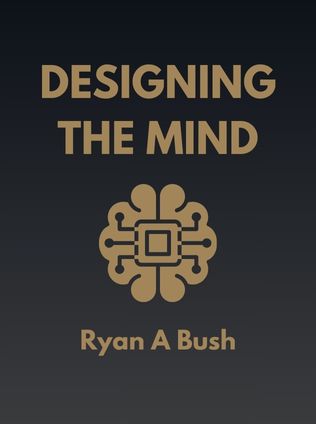
Designing the Mind
The Principles of Psychitecture
By Designing the Mind and Ryan A Bush
Published 01/2021
About the Author
Ryan A. Bush is not just a designer of systems, but a visionary architect of the human mind. With a career rooted in systems design for tech startups, Bush’s journey has always been about optimizing structures, whether they be software, buildings, or the human psyche. His passion for self-optimization led him to create Designing the Mind, a platform dedicated to sharing insights from philosophy and psychology to help individuals master their own minds. Bush’s other notable projects include Mindform, an online community and training platform, and The Anxiety Algorithm, a transformative 30-day program designed to change the way we relate to anxiety and stress.
Main Idea
Ryan A. Bush’s Designing the Mind is an invitation to take control of your mental processes, emotions, and behaviors by reprogramming your mind. Bush presents the mind as a malleable entity, much like a computer, where thought patterns, emotions, and behaviors are the software that can be adjusted and optimized. By offering strategies to alter these "mental algorithms," Bush empowers readers to transform themselves into their ideal selves. The book is structured around three realms of mastery: cognitive, emotional, and behavioral, each building upon the last, guiding the reader from mental mastery to emotional balance, and finally, to aligned and purposeful action.
Table of Contents
- Introduction: The Mind as a Computer
- Level 1: Adjusting Your Thought Patterns
- Level 2: Conquering Your Emotions
- Level 3: Mastering Your Behavior
- Conclusion: Becoming the Master of Your Mind
Introduction: The Mind as a Computer
In Designing the Mind, Ryan A. Bush begins by drawing a powerful analogy between the human mind and a computer. Just as a computer processes inputs through algorithms to produce outputs, so too does the human mind process external stimuli to create thoughts, emotions, and behaviors. Bush asserts that many of our thought patterns and emotional responses are not static; they are the product of "mental algorithms" that can be reprogrammed.
"The mind functions like a computer, with the proper knowledge, you can alter your brain’s algorithms like an engineer designing computer software." – Ryan A. Bush
This analogy sets the stage for the entire book, encouraging readers to see their minds as systems that can be optimized. This perspective is not only empowering but also deeply practical, offering a framework for understanding how thoughts and emotions arise and how they can be changed. The concept of neuroplasticity, or the brain's ability to change and adapt, is central to this discussion. Bush emphasizes that through conscious effort, one can reshape their mental processes to better align with their goals and values.
Sign up for FREE and get access to 1,400+ books summaries.
You May Also Like
The Subtle Art of Not Giving a F*ck
A Counterintuitive Approach to Living a Good Life
By Mark MansonRich Dad Poor Dad
What the Rich Teach Their Kids About Money - That the Poor and Middle Class Do Not!
By Robert T. KiyosakiHow To Win Friends and Influence People
The All-Time Classic Manual Of People Skills
By Dale CarnegieFreakonomics
A Rogue Economist Explores the Hidden Side of Everything
By Steven D. Levitt and Stephen J. Dubner



















